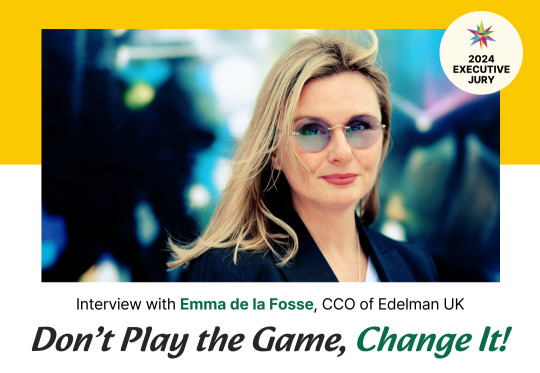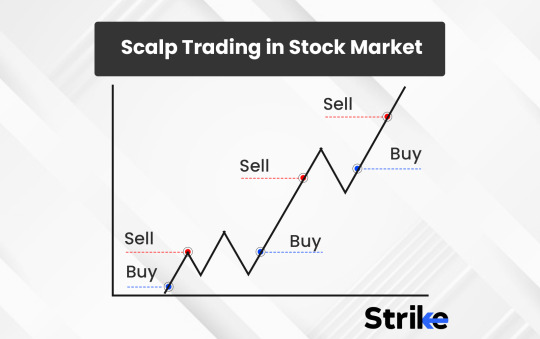#challenge: dma
Photo









DMA Challenge ☆ 08: Stranger Things [ High School Student / Hellfire Club / Nerd ]
↳ “I’ll get over it, I just gotta be dramatic first”
#dma challenge#challenge: dma#fd: stranger things#my edit#misc: moodboard#personal: me#back at it again BITCHES#easier to self-insert rather than think of OC things#LOL
21 notes
·
View notes
Text
I can't articulate this well right now but in my autistic Owen Carvour headcanon he has alexithymia.
Like pre-fall he has all of these big emotions but can't identify or express them in ways anyone else could understand (except maybe sometimes Curt, who I read as being oblivious to everyone else but talented at cracking this particular code) so he comes across as kinda cold and detached when really he's drowning in feelings he can't make any sense out of. To the point where feelings in general just feel like an existential threat to him because they make his brain work less logically and efficiently.
And then post-fall he suddenly has all these challenges he never had before, namely that now he can't stop expressing his emotions in a way that is totally terrifying and overwhelming and exhausting to him, and he still does not really know how to identify what he's feeling so he just feels dangerously out of control all the time, to the degree that he has to dissociate so he isn't incapacitated by anger, grief, abandonment issues, etc.
Like DMA is so much Not A Person that he doesn't even have a name. And Owen losing himself in that role allows him to function, allows him to seal away all of that messy emotional shit and do the thing he was trained to do- kill. And when the literal mask is off, Owen starts spiraling.
#projecting autistically probably#its my blorbo i'll make him autistic if I want to#saf headcanons#saf#spies are forever#owen carvour#autistic owen carvour
15 notes
·
View notes
Text
Apple has been fined €1.8bn (£1.5bn) by the EU for breaking competition laws over music streaming.
The firm had prevented streaming services from informing users of payment options outside the Apple app store, the European Commission said.
Competition commissioner Margrethe Vestager said Apple abused its dominant position in the market for a decade.
She ordered the US tech giant to remove all the restrictions. Apple has said it will appeal against the decision.
The European Commission's decision was triggered by a complaint by Swedish music streaming service Spotify, which was unhappy about the restriction and Apple's 30% fee..
Ms Vestager said Apple had restricted "developers from informing consumers about alternative, cheaper music services available outside of the Apple ecosystem".
"This is illegal under EU antitrust rules," she said.
However, Apple said it would appeal, adding there was no evidence consumers had been harmed.
"The decision was reached despite the Commission's failure to uncover any credible evidence of consumer harm, and ignores the realities of a market that is thriving, competitive, and growing fast," the company said in a statement.
"The primary advocate for this decision, and the biggest beneficiary, is Spotify, a company based in Stockholm, Sweden.
"Spotify has the largest music streaming app in the world, and has met with the EC [European Commission] more than 65 times during this investigation," it said.
Spotify attacks Apple's 'outrageous' 27% commission
Spotify called the fine handed out to Apple "an important moment" and said it sent "a powerful message" that "no company, not even a monopoly like Apple, can wield power abusively to control how other companies interact with their customers".
Apple said the Swedish company pays no commission to them as it sells its subscriptions on its website and not on the app store.
Spotify had argued that the restrictions benefit Apple's rival music streaming service, Apple Music.
Digital Markets Act
In January, Apple announced plans to allow EU customers to download apps outside of their own app store, as the introduction of the Digital Markets Act (DMA) drew closer.
The aim of the European Union's DMA is to help competition in the technology sector and to try to break down the stronghold the likes of Apple and Google have on the market.
The tech companies were given six months from August last year to comply with a full list of requirements under the new legislation, or face a fine of up to 10% of their annual turnover.
The firms have until later this week to comply with a raft of changes announced since the start of the year, as Apple, Meta and TikTok pursue challenges to aspects of the law.
Law professor at EDHEC, Anne Witt, told the BBC the DMA will have a "significant impact" on the way designated platforms operate within the EU.
"It is a more effective but also much blunter legal tool in the fight against market concentration in the digital economy," she said.
Last week, Spotify and 33 other companies operating across a wide range of digital sectors wrote to the European Commission with a renewed attack on Apple's "lack of compliance" with the DMA.
"Apple's new terms not only disregard both the spirit and letter of the law, but if left unchanged, make a mockery of the DMA and the considerable efforts by the European Commission and EU institutions to make digital markets competitive," it said.
16 notes
·
View notes
Text
Europe changed the rules of the internet this week when the Digital Markets Act took effect, holding the biggest tech companies to tough new standards. Now the world is waiting to see which giant will be first to fall foul of the law. One of the architects of the DMA says Apple is a strong candidate for the first formal investigation, describing the company as “low hanging fruit.”
Apple has faced intensifying pressure in recent years from competitors, regulators, and courts in both Europe and the US, over the restrictions it places on app-makers who must rely on its App Store to reach millions of users. Yesterday Apple terminated the developer account of Fornite publisher Epic Games which has challenged the company in US courts and recently announced its intention to launch a rival to the Apple App Store.
German MEP Andreas Schwab, who led the negotiations that finalized the DMA on behalf of the EU Parliament, says that makes Apple a likely first target for non-compliance. “[This] gives me a very clear expectation that they want to be the first,” he tells WIRED. “Apple’s approach is a bit weird on all this and therefore it's low hanging fruit.”
Schwab is not involved in enforcement of the DMA. That’s overseen by the European Commission, which has already demanded “further explanation” as to why Apple terminated Epic’s account and is evaluating whether this violates the DMA.
“Apple’s approach to the Digital Markets Act was guided by two simple goals: complying with the law and reducing the inevitable, increased risks the DMA creates for our EU users,” says the company in a statement sent to WIRED by Apple spokesperson Rob Saunders. Apple has said on its website that alternative app stores carry the risk of malware, illicit code and other harmful content.
The DMA’s rules that aim to “break open” tech platforms require Apple to allow iPhone users to download apps from places other than Apples’ official App Store. The Epic Games Store, announced in January, intended to be launched by the Fortnite-maker Epic, would have been the first alternative app store to take advantage of the new system.
Apple tells WIRED it had the right to terminate Epic’s accounts according to a 2021 California court ruling. Epic CEO Tim Sweeney has been a vocal critic of what he styles as Apple’s “app store monopoly” for years, although in January the US supreme court denied a request to hear the latest episode in a lengthy antitrust dispute between the two companies in a victory for the smartphone maker.
The DMA went into force at midnight on March 7 in Brussels—3 pm in Silicon Valley. From that moment, six of the world’s biggest tech companies—Apple, Alphabet, Meta, Amazon, Microsoft, and TikTok’s Beijing-based owner ByteDance—must comply with a suite of new rules designed to improve competition in digital markets.
In addition to Apple having to allow outside apps, Microsoft Windows will no longer have Microsoft-owned Bing as its default search tool; users of Meta’sWhatsApp will be able to communicate with people on rival messaging apps; and Google and Amazon will have to tweak their search results to create more room for rivals. Companies that don’t comply with the new rules can be fined up to 20 percent of their global turnover.
The new rules should cause the European internet to “change for the better,” says Schwab, a center-right MEP. “To allow more openness, more fairness, and most of all more innovation and therefore new services—that’s the idea.”
Schwab’s comments add to a recent chorus of criticism targeting Apple. The EU’s antitrust chief, Margarethe Vestager, told Bloomberg earlier this week that the DMA will initially focus on sorting out big tech’s app stores. “I think it’s important you can have more than one app store on your phone,” she said on Tuesday.
Following Apple’s removal of Epic, the tone in the hallways of the Commission had become more urgent. “Under the #DMA, there is no room for threats by gatekeepers to silence developers," said Thierry Breton, the EU's industry chief, on X on Thursday, apparently referring to allegations by Epic's Sweeney that Apple had blocked the company's account because of the CEO’s critical Tweets. “I have asked our services to look into Apple’s termination of Epic’s developer account as a matter of priority.”
Flexing the DMA’s powers on Apple’s App Store would advertise how the law can improve life online for the general public, Schwab says. “I think the App Store would be a good example to show what we want to achieve with the DMA,” he says. “They will just see more apps and they will like these apps.”
Giving people choice over where they get mobile apps by requiring Apple and Google to permit alternative app stores on devices is seen as a key pillar of the DMA. In addition to giving users more choice, app developers will also gain more opportunities to to innovate, increasing competition, says Schwab. “With alternative app stores we can make markets a bit broader.”
4 notes
·
View notes
Text
This day in history

#20yrsago Spammer suing anti-spammer for invading privacy https://www.washingtonpost.com/archive/business/2003/04/07/marketer-challenges-anti-spam-crusader/6142064a-8603-4e09-8ad7-3f85d87bb840/
#15yrsago CCTV cameras move crime a few feet down the sidewalk — study https://www.sfgate.com/bayarea/article/Crime-cameras-not-capturing-many-crimes-3290349.php
#15yrsago Reward offered for UK Prime Minister and Home Secretary’s fingerprints https://web.archive.org/web/20080409124101/http://www.privacyinternational.org/article.shtml?cmd[347]=x-347-561230
#15yrsago Three Shadows: haunting and dreamlike graphic novel of love, bravery and sacrifice https://memex.craphound.com/2008/04/07/three-shadows-haunting-and-dreamlike-graphic-novel-of-love-bravery-and-sacrifice/
#10yrsago ExxonMobil, FAA, Arkansas cops establish flight restriction zone, threaten reporters who try to document Mayflower, AR spill https://www.motherjones.com/politics/2013/04/reporters-say-exxon-impeding-spill-coverage-arkansas/
#10yrsago French spies demand removal of a Wikipedia entry, threaten random Wikipedia admin in France when they don’t get their way https://meta.wikimedia.org/wiki/Legal/Statement_on_France
#10yrsago Widespread, illegal debtors’ prisons in Ohio https://www.aclu.org/news/smart-justice/outskirts-hope-how-ohios-debtors-prisons-are-ruining-lives-and
#5yrsago Justin Trudeau’s no-action tweet offering help to refugees harmed by Trump’s #MuslimBan created chaos https://nationalpost.com/news/politics/trudeau-tweet-caused-influx-of-refugee-inquiries-confusion-within-government-emails-reveal
#5yrsago Molly Ringwald’s brilliant essay about John Hughes is a superb exploration of what it means to love “problematic” art https://memex.craphound.com/2018/04/07/molly-ringwalds-brilliant-essay-about-john-hughes-is-a-superb-exploration-of-what-it-means-to-love-problematic-art/
#5yrsago If this goes on… The 1% will own two thirds of the world by 2030 https://www.theguardian.com/business/2018/apr/07/global-inequality-tipping-point-2030
#5yrsago Scott Pruitt is such a colossal asshole that the lobbyists who were bribing him with nearly-free lodgings evicted him https://www.cnn.com/2018/04/06/politics/pruitt-trump/index.html
#1yrago Cops prove how stupid the SMART Act is https://pluralistic.net/2022/04/07/moral-hazard-of-filternets/#dmas
#1yrago The antitrust case against gig companies https://pluralistic.net/2022/04/07/moral-hazard-of-filternets/#vertical-restraints
4 notes
·
View notes
Text
[EXECUTIVE JURY] Don't Play the Game. Change it!

- Interview with Emma de la Fosse, chief creative officer of Edelman UK
One of the five top echelon professionals chosen as a jury president for the MAD STARS 2024 awards is Emma de la Fosse, chief creative officer, Edelman UK.
Emma became the first-ever group chief creative officer of Ogilvy UK in 2016. Under her co-leadership, OgilvyOne became the most highly awarded digital and direct agency in the UK. Three years later, she became chief creative officer of one of the UK’s foremost digital agencies, Digitas UK, whose creative fortunes and reputation she helped to rebuild. She is now chief creative officer of Edelman UK, the world’s largest and most successful PR and comms agency. This legendary career began with a role as a copywriter in a creative boutique agency.
In 2020, Emma was awarded a lifetime achievement medal recognising outstanding creativity in customer marketing, the Caples Andi Emerson award. She has led her teams to win every major international award D&AD Yellow Pencils, Cannes Grand Prix, One Show Best in Show, and DMA Grand Prix through to multiple Effie awards for effectiveness and has been the executive creative director for world-famous brands such as IBM, British Airways, British Gas, Kimberly Clark and Kellogg’s.
Emma gave MAD STARS a preview of her judging criteria as well as an insight into her career and the key elements of great work!
---------------------------------------------------------------------
Q. What are you hoping to find at MAD STARS?
A: Margaret Heffernan, professor of business practice at Bath University is one of my heroes. She says, “A world that was once complicated is now complex. There are still patterns, but they don’t repeat. In today’s world, creative thinking is essential to business.” So what I am looking for are creative solutions for our world’s problems. As Margaret also says, “Don’t play the game. Change it.”
Q. What makes a good MAD STARS awards judge?
A: Sometimes, senior people can become a little cynical when they’ve worked in the industry for a long time. But MAD Stars jurors are still like kids in a sweet shop when it comes to ideas. They are those who ask “why not?” instead of “why?” People who believe in the power of the impossible.
Q. What skills and talents have you used in your career?
A: Gosh, that’s a question I’ve not really thought about before. I suppose tenacity is one of them. Average is easy. Great is hard. You can’t give up easily if you want to get the best ideas made. What else? My brain sees connections very readily, it spots patterns and recognizes similarities between things. That helps when looking at old problems in new ways. I’ve got quite a strategic brain too, so I can write a decent brief and tell if somebody else’s is right or wrong. But mostly I have a sense of fun and I love to build creative teams. To me, it’s like family. A strong creative culture is essential to getting great work made.
Q. What are the biggest challenges to getting MAD STARS award-worthy work through?
A: All great creative work is hard to get out of the deck and into the world. That’s because it challenges you, it can put you outside your comfort zone. As human beings, we instinctively gravitate towards the familiar. Especially in times of global strife or economic uncertainty. So, the kinds of ideas that win at MAD STARS, those that seek to shift the status quo, will have been pretty challenging to get live.
--------------------------------------------------------------------------
To give you a glimpse into her judging criteria, Emma shared with us four of her most recent inspirations and one of her favorites.
Read on to find out what inspired her!

<SOLAR IMPULSE - PRÊT À VOTER>
Location: France
Brand: Solar Impulse
Agency: Publicis Conseil
: Solar Impulse is a foundation headed by the explorer Bertrand Piccard, it is dedicated to solving the knowing gap when it comes to tackling environmental challenges by collecting and promoting innovative ideas that are pragmatic and economically viable- it leads to what it calls 'eco-realism'.
Solar Impulse curated chose 50 out of 1400 ideas that were pragmatic and economically sound solutions for key environmental problems in a book called: “Ready to Vote”. A limited edition of books was sent out to 577 newly elected MPs along with this pre-drafted legislation that MPs could use in debates in Parliament.
So far 3 legislative proposals from Prêt à Voter have been adopted word for word, integrated into the Renewable Energy bill of the French Government. There is momentum for further concrete change, with 9 other ready-to-vote proposals being debated in the Senate, 1 is being scrutinized by the Swiss Parliament, and an environmental law being submitted to the European Union.
Image Source: SOLAR IMPULSE FOUNDATION
youtube
------------------------------------------------------------------------------

<THE BRAKE ROOM>
Location: United States
Brand: Chick-fil-A
Agency: McCann New York
: More than 65,000 food delivery workers in New York go above and beyond to deliver for the city. Winter conditions make what they do even more challenging. While they’re always on the go, they essentially have no place to go in between stops.
The Brake Room is a first-of-its-kind rest station allowing food delivery workers to get warm, use the restroom, and grab a cup of coffee in between deliveries, free of charge.
Chick-fil-A describes the service as ‘an extension of the same experience that Chick-fil-A restaurants provide to guests,’ and ‘just a small way to show our appreciation for the delivery drivers who help fuel our business.’
Image Source: Chick-fil-A https://www.chick-fil-a.com/brake-room
----------------------------------------------------------------------------

<50+>
Location: Mexico
Brand: Popeyes
Agency: GUT Mexico City
: In 2022, the global chicken and burger brand Popeyes will celebrate its 50th anniversary, and to honor the occasion, a special campaign called “50+” was launched in Mexico. Although Popeyes has been around for 50 years, the brand was relaunched in Mexico in late 2021, more than a year ago.
“50+” was born out of the problem that more than 20% of unemployment cases in Mexico are between the ages of 45-65. The idea was to celebrate the 50th anniversary by hiring people over the age of 50, who are often stereotyped as low performers and unable to find work. The campaign was designed to positively impact the Mexican community and encourage people to get involved in the continued growth of Popeyes in Mexico.
Image Source: INSIDER LATAM – YouTube ‘Popeyes- GUT México’
youtube
---------------------------------------------------------------------------

<Heinz Fraud Ketchup>
Location: Canada
Brand: Heinz Ketchup
Agency: Rethink Canada
: Heinz is one of the world's most beloved ketchup brands, known for its distinctive thick, rich sauce and irreplaceable ketchup. However, due to cost concerns, many restaurants refilled Heinz bottles with other ketchup, and it wasn't hard to find social media posts from consumers directly criticizing this act. Inspired by these posts, Heinz launched a bold campaign called “Fraud Ketchup” to uphold the brand's core belief that ‘It Has To Be Heinz’.
The campaign encouraged people to take photos of restaurants they suspected were using another brand of ketchup in Heinz bottles and tag them on Heinz's Instagram. In addition to working with the local restaurants most tagged with “fraudulent ketchup,” Heinz created a collaborative project to get them to use Heinz ketchup and offered free ketchup for a year to the first 10 restaurants that committed to using only Heinz ketchup.
Image Source: Rethink Communications
-----------------------------------------------------------------------------

<Contract for Change>
Location: United States
Brand: Michelob ULTRA Pure Gold
Agency: FCB Chicago
: Contract for Change is a campaign by Michelob ULTRA Pure Gold, the first beer brand to be USDA-certified, to support farmers converting their existing barley fields to organic. The campaign is designed to address the challenge of organic barley production, with only 1% of U.S. barley fields being organic, to drive sustainable growth and support the expansion of the organic grain industry.
One of the reasons there are so few organic barley fields is that converting existing fields to organic is expensive, and farmers face a three-year wait with an uncertain future. To address this, Michelob ULTRA signed a long-term transition contract to purchase barley grown during the transition period and the first year of organic production. Michelob ULTRA purchases barley grown during the transition period at a 25% higher price to support farmers. In addition, farmers participating in the campaign will benefit from the ability to sell organic crops other than barley grown in rotation.
This resulted in 175 farmers signing contracts to participate in the campaign, enabling 4% of all barley fields in the U.S. to produce organic barley.
* Emma Says, “This is not recent but it’s one of my all-time fave pieces of world-changing work!”
Image Source: shachter - Michelob Ultra. Contract for Change
---------------------------------------------------------------------------
You've seen the interview with Emma, our executive jury, and we hope it inspires your entries.
Remember, the 1st entry deadline is approaching fast! It closes on May 10th (KST), so there's only one week left to take advantage of the early bird.
Seize this opportunity to showcase your creative ideas on a global stage! We're eagerly waiting for your submissions that will change the world.
👇🏻Submit your entry now👇🏻
#festival#advertising#busan#marketing#creative#digital#awards#madstars#award#2024#madstars2024#interview#jury#executive jury#jury interview#entry#call for entry#Youtube
0 notes
Text
Google Lays Off Hundreds Of ‘Core' Employees, Responsible For Building The Technical Foundation Behind The Company's Flagship Products And Protecting Users' Online Safety, –Moves Some Positions To India And Mexico – Los Angeles California reporting
Core teams include key technical units from information technology, its Python developer team, technical infrastructure, security foundation, app platforms, core developers and various engineering roles.
At least 50 of the positions eliminated were in engineering at the company's offices in Sunnyvale, California, filings show. Many of the Core teams will hire corresponding roles in Mexico and India, according to internal documents viewed by CNBC.
Google/Alphabet has been slashing headcount since early last year, when the company announced plans to eliminate about 12,000 jobs, or 6% of its workforce, following a downturn in the online ad market. Even with digital advertising rebounding in the past couple quarters, Alphabet has continued downsizing, with layoffs across multiple organizations this year.
CFO Ruth Porat announced in mid-April a restructuring to the company's finance department, which included layoffs and moving positions to Bangalore and Mexico City. The company's search boss, Prabhakar Raghavan, told employees at an all-hands meeting in March that Google plans to build teams closer to users in key markets, including India and Brazil, where labor is cheaper than in the U.S.
The latest cuts comes as the company enjoys its fastest growth rate since early 2022, alongside improving profit margins.
Last week, Alphabet reported a 15% jump in first-quarter revenue from a year earlier, and announced its first-ever dividend and a $70 billion buyback.
The Core layoffs also include the governance and protected data group, which will be at the center of regulatory challenges facing the company, particularly as lawmakers across the globe focus more on developments in AI. The European Union's Digital Markets Act (DMA) went into effect in March, and is aimed at clamping down on anti-competitive practices in tech.
0 notes
Text
Dimethyl Amine Prices, Pricing, Trend, Supply & Demand and Forecast | ChemAnalyst

Dimethyl Amine Prices, a vital chemical compound used in various industrial applications, plays a crucial role in numerous sectors, including pharmaceuticals, agriculture, and manufacturing. Its significance in the synthesis of pharmaceuticals, pesticides, and other organic compounds underscores its demand in the global market. Understanding the dynamics of dimethyl amine prices is essential for stakeholders to navigate the market effectively.
The price of dimethyl amine is subject to multiple factors, with market demand and supply being the primary drivers. As industries such as pharmaceuticals and agriculture expand, the need for dimethyl amine increases correspondingly, influencing its pricing. Moreover, fluctuations in raw material costs, particularly those related to natural gas and methanol, impact the overall production cost of dimethyl amine, consequently affecting its market price. Additionally, geopolitical factors, such as trade regulations and regional policies, can influence the availability and pricing of dimethyl amine.
In recent years, the dimethyl amine market has witnessed notable fluctuations in prices due to various factors. For instance, disruptions in the supply chain caused by the COVID-19 pandemic led to volatility in prices as production facilities faced operational challenges and logistical issues. Furthermore, shifts in consumer preferences towards eco-friendly products have prompted manufacturers to explore alternative production methods, which could potentially impact dimethyl amine prices in the long term.
Get Real Time Prices of Dimethyl Amine: https://www.chemanalyst.com/Pricing-data/dimethylamine-dma-1180
To mitigate the impact of price fluctuations, stakeholders in industries reliant on dimethyl amine often engage in strategic planning and procurement practices. This includes establishing long-term contracts with suppliers, diversifying sourcing channels, and investing in research and development to optimize production processes and reduce costs. Additionally, staying informed about market trends, regulatory developments, and technological advancements is crucial for making informed decisions regarding dimethyl amine procurement and utilization.
In the context of sustainable development goals and environmental concerns, the dimethyl amine industry is also witnessing a growing emphasis on eco-friendly practices and green chemistry. Manufacturers are increasingly exploring renewable sources of raw materials and adopting cleaner production technologies to minimize environmental impact. While these initiatives may initially entail higher production costs, they can contribute to long-term cost savings and enhance the competitiveness of dimethyl amine in the market.
The global dimethyl amine market is characterized by intense competition among key players vying for market share. Market participants employ various strategies, such as mergers and acquisitions, product innovation, and geographical expansion, to strengthen their foothold in the industry. Additionally, partnerships and collaborations along the value chain enable companies to leverage complementary capabilities and resources, fostering innovation and driving growth.
As the demand for dimethyl amine continues to evolve, particularly in emerging economies with expanding industrial sectors, the market dynamics are expected to undergo further transformation. Factors such as urbanization, infrastructure development, and population growth contribute to increased demand for products that utilize dimethyl amine as a key ingredient. Consequently, stakeholders need to adapt to changing market conditions and leverage opportunities for sustainable growth and development.
In conclusion, the pricing of dimethyl amine is influenced by a myriad of factors, including market demand and supply, raw material costs, geopolitical dynamics, and industry trends. Stakeholders must stay vigilant and proactive in monitoring these factors to effectively manage risks and capitalize on opportunities in the dynamic dimethyl amine market. By fostering innovation, embracing sustainability, and adopting strategic approaches to procurement and production, businesses can navigate challenges and thrive in an increasingly competitive environment.
Get Real Time Prices of Dimethyl Amine: https://www.chemanalyst.com/Pricing-data/dimethylamine-dma-1180
Contact Us:
ChemAnalyst
GmbH - S-01, 2.floor, Subbelrather Straße,
15a Cologne, 50823, Germany
Call: +49-221-6505-8833
Email: [email protected]
Website: https://www.chemanalyst.com
0 notes
Text
Methylamines Uncovered: Composition and Versatile Applications Explored
Methylamines, organic compounds characterized by a methyl group bonded to an amino group, are increasingly appreciated for their multifaceted properties and broad applications across industries. This concise article presents an overview of their chemical composition, synthesis methods, and diverse uses in pharmaceuticals, agriculture, and organic synthesis. Recent advancements and future prospects in methylamine research are also examined, highlighting their crucial role in contemporary chemistry and industry.
Introduction: Methylamines, including monomethylamine (MMA), dimethylamine (DMA), and trimethylamine (TMA), are fundamental organic compounds valued for their reactivity and versatility. This article provides a brief overview of their chemical composition, synthesis pathways, and various applications, emphasizing their importance in pharmaceuticals, agriculture, and materials science.
Chemical Composition and Synthesis: Methylamines are typically synthesized through the reaction of ammonia with methanol or by reducing nitro compounds. These synthetic pathways yield high-purity methylamines suitable for a wide range of applications in pharmaceuticals, agriculture, and organic synthesis.
Applications in Pharmaceuticals: Methylamines play a critical role in pharmaceutical synthesis, contributing to the production of various drugs and intermediates. DMA and MMA derivatives are essential in synthesizing antihistamines, antidepressants, and local anesthetics, demonstrating their significance in pharmaceutical chemistry.
Agrochemical Applications: In agriculture, methylamines are employed in the production of pesticides, herbicides, and fungicides. DMA serves as a key precursor in herbicide synthesis, while TMA derivatives contribute to fungicide formulations, aiding in crop protection and yield enhancement.
Organic Synthesis: Methylamines are indispensable in organic synthesis, facilitating C-N bond formation and enabling the synthesis of complex organic molecules. DMA and MMA derivatives are widely used in reductive amination reactions and pharmaceutical intermediate synthesis, showcasing their versatility in organic chemistry.
Future Perspectives: Ongoing research endeavors aim to explore novel synthesis methodologies and expand the applications of methylamines in catalysis, green chemistry, and sustainable materials. Additionally, there is growing interest in utilizing methylamines as renewable feedstocks for bio-based chemical production, highlighting their potential in advancing sustainability within the chemical industry.
Conclusion: In conclusion, methylamines offer a myriad of opportunities across various industrial sectors due to their versatile properties and wide-ranging applications. From pharmaceuticals to agriculture and organic synthesis, the versatility of methylamines underscores their significance in modern chemistry and industry. Continued research efforts are essential for fully harnessing the potential of methylamines and addressing evolving global challenges.
0 notes
Text
"Mastering the Art of Scalp Trading: Strategies, Tools, and Tips for Swift Profits in the Stock Market"

Scalp trading, also known as scalping, is a popular trading strategy in the stock market characterized by its fast-paced nature. Scalpers aim to achieve profits from small price changes in stocks, often entering and exiting positions within minutes or even seconds. This high-frequency trading approach requires a comprehensive understanding of market movements, an ability to make quick decisions, and meticulous risk management. This article explores the intricacies of scalp trading, including its strategies, tools, benefits, risks, and tips for success.
Understanding Scalp Trading
Scalp trading is grounded in the principle of quantity over quality. Scalpers are not concerned with significant gains from a single trade; instead, they focus on the accumulation of small profits over a large number of trades throughout the trading day. This strategy hinges on the belief that smaller moves in stock prices are easier to catch than larger ones. Scalpers operate on thin margins and leverage high volumes to amplify their profits.
Key Strategies in Scalp Trading
Several strategies underpin successful scalp trading, including:
Bid-Ask Spread Capturing: Scalpers often buy at the bid price and sell at the ask price to gain the spread difference. This strategy requires a highly liquid market to execute quick trades.
Volume Heatmaps and Order Flow: Analyzing volume and order flow helps scalpers identify immediate directional moves in stock prices, enabling them to execute quick trades.
Technical Indicators and Chart Patterns: Short-term chart patterns and technical indicators like moving averages, RSI (Relative Strength Index), and MACD (Moving Average Convergence Divergence) can signal entry and exit points for scalpers.
Tools for Scalp Trading
Successful scalp trading relies heavily on having the right tools, including:
High-Speed Internet and a Reliable Trading Platform: Speed is of the essence in scalp trading. Delays in order execution can significantly impact profitability.
Direct Market Access (DMA): DMA allows scalpers to interact directly with the exchange's order book, which is crucial for timely trade execution.
Real-time Market Data: Access to real-time quotes and market data is essential for making informed trading decisions quickly.
Benefits of Scalp Trading
Scalp trading offers several advantages:
Frequent Opportunities: The strategy capitalizes on the numerous small movements that occur in the stock market daily.
Limited Risk Exposure: By holding positions for a very short time, scalpers limit their exposure to large adverse market movements.
Market Flexibility: Scalp trading can be effective in both rising and falling markets, as it relies on small price changes rather than the market's overall direction.
Risks and Challenges
Despite its benefits, scalp trading is not without risks and challenges:
High Transaction Costs: Frequent trading increases transaction costs, which can eat into profits.
Requires Constant Attention: Scalp trading is time-intensive and requires constant market monitoring, which can be mentally exhausting.
Risk of Significant Losses: While individual losses are typically small, the cumulative effect of several losing trades can be significant. Additionally, high leverage can amplify losses.
Tips for Successful Scalp Trading
To maximize the chances of success in scalp trading, consider the following tips:
Start with a Demo Account: Practicing with a demo account can help traders understand the nuances of scalp trading without risking real money.
Set a Risk Management Strategy: Establishing stop-loss orders and daily loss limits can help manage risks effectively.
Keep a Trading Journal: Documenting each trade, including the strategy used, the outcome, and any lessons learned, can provide valuable insights for improving future trades.
Stay Informed: Keeping up with financial news and market trends can provide scalpers with a competitive edge.
Use Technology Wisely: Leveraging trading software with automation and alert features can enhance efficiency and effectiveness.
Conclusion
Scalp trading in the stock market is a challenging yet potentially rewarding strategy that suits traders who can dedicate the time, discipline, and focus required to succeed. It appeals to those who prefer a fast-paced trading environment and are comfortable making quick decisions. While scalp trading offers the potential for significant profits through the accumulation of small gains, it also carries risks that demand meticulous strategy and risk management. As with any trading strategy, success in scalp trading comes with experience, continuous learning, and an unwavering commitment to staying abreast of market dynamics.
0 notes
Text
The Apple-Epic saga today takes a new turn as Fortnite developer Epic Games has dubbed Apple’s developer account closure as a ‘threat’ to the iOS ecosystem.
The story unfolds because Apple’s app development partner, Epic Games, alleges that Apple has shut down their developer account. This comes as a stark departure from Epic’s previous approval of its account, citing a new regional law, the Digital Markets Act (DMA), which allows Fortnite to be brought back to iOS devices in the EU. However, Epic now claims that Apple’s lawyers have sent them a letter stating that it is shutting down their Epic Games Sweden AB account — a move Epic has termed a “serious violation of the DMA” and hints that Apple has “no intention of allowing competition on its iOS devices.”
“By closing Epic’s developer account, Apple is removing one of the biggest potential competitors from the Apple App Store. They are undermining our ability to be an effective competitor and are showing other developers what happens when you attempt to challenge or criticize their unfair practices,” Epic wrote in a company blog post where it also published a copy of its letter to Apple.
The game developer alleges that one reason Apple supported its decision was criticism of the proposed DMA rules, a post by Epic Games CEO Tim Sweeney X (formerly Twitter). Certainly, Epic has found a thorn in Apple’s side, taking it to court for disbelief and lobbying against Apple’s control and influence on the economy and for lobbing multiple markets for regulation. Consequently, it seems more likely to be Apple’s rather than Epic’s doing. According to Epic, Apple has told the tech giant to retaliate against them, hinting at a letter written by Epic’s executive, Phil Schiller.
“In the past, Epic has made agreements with Apple and then broken them,” Schiller wrote in a letter dated February 23, 2024, suggesting that the game maker has profited. Recently, you described our DMA agreement as ‘a hot mess,’ ‘a circus act,’ and ‘a confusing new example of corrupt approval.’ And you accused it of ‘junk fees’ and ‘Apple taxes.'”
Schiller advised that Epic should “reconsider trusting us at this time” with its “colorful criticisms” of Epic’s past actions. He added that another desired violation “may expose the integrity of the iOS platform, user security, and privacy to threats.”
“…Simply, in a not-too-subtle way, please tell us why we should trust Epic at this time,” he concluded.
It also mentioned that its company’s Epic Games, Unreal Engine, and other developer tools have had a contractual relationship with Apple since 2010 and that Apple itself is a supporter of Epic’s Unreal Engine.
In response to Epic’s news release, Apple shared the following statement:
https://sportnewszone.com/the-apple-epic-saga-today-takes-a-new-turn-as-fortnite-developer-epic-games-has-dubbed-apples-developer-account-closure-as-a-threat-to-the-ios-ecosystem/onduct, Apple has elected to exercise its contractual right to terminate its DPLA with respect to any and all Epic Games-owned, affiliated, and/or other Epic Games-controlled applications.
Apple also noted that Epic Games Sweden entered into Apple’s Developer Program License Agreement through a click-through agreement, which was not accompanied by any Apple-executed review at that time.
After careful review, Apple has concluded that it must take action to uphold the terms of its contractual agreements in response to what it perceives as significant breaches by Epic Games. In consideration of both past incidents and ongoing behavior, Apple has chosen to invoke its contractual authority to revoke the Developer Program License Agreement (DPLA) with regard to any and all applications owned, affiliated with, or under the control of Epic Games.
0 notes
Text
It’s billed as a summit for democracy. Under U.S. leadership, countries from six continents will gather from March 29 to March 30 to highlight “how democracies deliver for their citizens and are best equipped to address the world’s most pressing challenges,” according to the U.S. State Department.
Although advancing technology for democracy is a key pillar of the summit’s agenda, the United States has been missing in action when it comes to laying out and leading on a vision for democratic tech leadership. And by staying on the sidelines and letting others—most notably the European Union—lead on tech regulation, the United States has the most to lose economically and politically.
One in five private-sector jobs in the United States is linked to the tech sector, making tech a cornerstone of the U.S. economy. When U.S. tech companies are negatively impacted by global economic headwinds, overzealous regulators, or other factors, the consequences are felt across the economy, as the recent tech layoffs impacting tens of thousands of workers have shown.
And “tech” isn’t just about so-called Big Tech companies such as Alphabet (Google’s parent company) or social media platforms such as Meta’s Facebook and Instagram. Almost every company is now a tech company—automakers, for example, can track users’ movements from GPS data, require large numbers of computer chips, and use the cloud for data storage. Rapid developments in artificial intelligence, especially in the field of natural language processing (the ability behind OpenAI’s ChatGPT), have widespread applications across an even larger swath of sectors including media and communications.
This means that tech policy is not just about content moderation or antitrust legislation—two of the main areas of focus for U.S. policymakers. Rather, tech policy is economic policy, trade policy, and—when it comes to U.S. tech spreading across the globe—foreign policy.
As the global leader in technology innovation, the United States has a real competitive edge as well as a political opportunity to advance a vision for technology in the service of democracy. But the window to act is rapidly narrowing as others, including like-minded democracies in Europe but also authoritarian China, are stepping in to fill the leadership void.
The European Union has embarked on an ambitious regulatory agenda, laying out a growing number of laws to govern areas including digital services taxes, data sharing, online advertising, and cloud services. Although the regulatory efforts may be based in democratic values, in practice, they have an economic agenda: France, for example, expects to make 670 million euros in 2023 from digital services taxes, with much of that coming from large U.S. tech companies.
What’s worse is that while other key EU regulations, such as the Digital Markets Act (DMA), target the largest U.S. firms, they leave Chinese-controlled companies such as Alibaba and Tencent less regulated. That’s because the DMA sets out very narrow criteria to define “gatekeepers,” such as company size and market position, to only cover large U.S. firms, thus benefiting both European companies and subsidized Chinese competitors and creating potential security vulnerabilities when it comes to data collection and access.
While Europe rushes to regulate, China has developed an effective model of digital authoritarianism: strangling the internet with censorship, deploying AI technologies such as facial recognition for surveillance, and advocating for cyber “sovereignty,” which is doublespeak for state control of data and information. Beijing has been actively exporting these tools to other countries, primarily in the global south, where the United States is fighting an uphill battle to convince countries to join its global democracy agenda.
And the battle for hearts and minds has implications far beyond tech—it goes to the heart of U.S. global leadership. In last month’s vote at the United Nations to condemn Russia’s brutal invasion of Ukraine, endorsed by the United States, the majority of the countries that voted against or abstained were from Africa, South America, and Asia.
Without a U.S.-led concerted effort to push back against authoritarian states’ desire to define the rules around technology, large democracies such as Turkey and India are also wavering, imposing increasingly authoritarian limits on free speech online. The result is growing digital fragmentation—fragmentation that benefits authoritarian adversaries.
The Biden administration says it wants to see technology harnessed to support democratic freedoms, strengthen our democratic alliances, and beat back the authoritarian vision of a government-run internet.
Here’s how it could help achieve these goals.
First, the administration should map out an affirmative technology strategy, making sure that U.S. workers and consumers benefit from U.S. tech leadership. This means investing in competitiveness and a smarter public-private approach to research and development, an area the United States has underfunded for over a decade.
Tech touches on almost every sector of the U.S. economy as well as international trade, defense, and security, and involves almost every government agency from the State Department’s Bureau of Cyberspace and Digital Policy to the Federal Trade Commission and the Cybersecurity and Infrastructure Security Agency. And while most European countries now have full ministries for digital affairs, the U.S. doesn’t have similarly politically empowered counterparts tasked with coordinating a whole-of-government effort across all government agencies to produce a national strategy for technology. This needs to change.
Second, the administration should take advantage of the bipartisan consensus in the U.S. Congress on the need to push back against China’s growing domination in tech by putting forward a balanced regulatory agenda that establishes clear rules for responsible innovation. In an op-ed earlier this year, U.S. President Joe Biden called for Republicans and Democrats to hold social media platforms accountable for how they use and collect data, moderate online content, and treat their competition. To be sure, a national privacy law is long overdue, as several states have already passed their own laws, creating a confusing regulatory environment.
But this agenda is too backward-looking: Policymakers today are debating how to regulate technology from 20 years ago, when social media companies first emerged. As ChatGPT has shown, tech advancements far outpace regulatory efforts. A balanced agenda would set out key principles and ethical guardrails, rather than seek to regulate specific companies or apps. Banning TikTok, for example, won’t prevent another Chinese company from taking its place.
Third, the U.S. should reenergize its engagement in multilateral institutions. The United States is taking the right steps in endorsing Japan’s initiative at the next G-7 meeting to establish international standards for trust in data flows, known as the Data Free Flow with Trust. The administration has also appointed an ambassador at large for cyberspace and digital policy to work more closely with allies on tech cooperation.
The U.N.’s International Telecommunication Union, which helps develop standards in telecoms, is now directed by American Doreen Bogdan-Martin, which also presents an opportunity to beat back Russian and Chinese attempts to impose government control over the internet and instead reinforce the present private sector- and civil society-led internet governance model.
Washington has led important defensive efforts to challenge Beijing’s system of sovereignty and surveillance and has brought key allies along in these efforts. But it has not done enough to drive an affirmative agenda on technology innovation and tech-driven economic opportunity. The Biden administration has an opportunity now to prioritize tech. There is no time to waste.
4 notes
·
View notes
Text

Achieving Mastery in Laparoscopic Surgery: FMAS and DMAS Training in India
Introduction
Laparoscopic surgery, a pivotal advancement in the field of minimally invasive surgery, has transformed the surgical landscape by providing numerous benefits over traditional open surgery. This includes reduced post-operative pain, shorter hospital stays, faster recovery, and minimal scarring. Given these advantages, the demand for skilled laparoscopic surgeons is on the rise. Consequently, the need for comprehensive training programs such as the Fellowship in Minimal Access Surgery (FMAS) and the Diploma in Minimal Access Surgery (DMAS) has never been more acute, especially in India.
In light of the growing number of gynecologists, general surgeons, and urologists looking to enhance their expertise in laparoscopic surgery, India has emerged as a promising destination for world-class FMAS and DMAS training programs. These programs are meticulously designed to equip surgeons with the theoretical knowledge and practical skills necessary to achieve mastery in laparoscopic procedures. Through a combination of didactic lectures, hands-on training, and real-world surgical exposure, participants are thoroughly prepared to meet the challenges and complexities of modern laparoscopic surgery.
Importance of Laparoscopic Surgery Training Programs

The evolution of surgical techniques has placed laparoscopic surgery at the forefront of minimally invasive procedures. Training programs like FMAS (Fellowship in Minimal Access Surgery) and DMAS (Diploma in Minimal Access Surgery) are pivotal in equipping healthcare professionals with the necessary skills to perform these advanced procedures. This section explores the benefits of undergoing such training and its particular relevance for gynecologists, general surgeons, and urologists.
Benefits of FMAS and DMAS training
Engaging in FMAS and DMAS training programs offers several advantages:
- Enhanced surgical skills through hands-on experience in state-of-the-art laparoscopic procedures.
- Increased patient safety and improved surgical outcomes due to better precision and minimally invasive techniques.
- Better career prospects and opportunities for advancement in the medical field.
- Access to a global network of professionals specializing in minimal access surgery.
Relevance for gynecologists, general surgeons, and urologists
For gynecologists, mastering laparoscopic techniques can revolutionize treatment approaches to conditions such as endometriosis and uterine fibroids. General surgeons benefit by offering less invasive options for appendectomies and gallbladder surgeries. Urologists can enhance their skills in procedures such as nephrectomies and prostatectomies. Overall, this training is vital for these specialties to stay current with surgical advancements and to meet the growing patient demand for minimally invasive procedures.
Understanding FMAS and DMAS Training Programs in India
Overview of FMAS (Fellowship in Minimal Access Surgery)
The FMAS program is designed to provide comprehensive training in the principles and practices of minimal access surgery. It includes theoretical knowledge, practical skills training, and real-time surgical experience under expert supervision. The curriculum typically covers various laparoscopic procedures, instrument handling, and patient management before, during, and after surgery.
Overview of DMAS (Diploma in Minimal Access Surgery)
The DMAS training is a slightly more extensive program that delves deeper into advanced laparoscopic techniques and procedures. Participants engage in hands-on training sessions, and simulations, and are exposed to the latest developments in minimal-access surgery technology and equipment. This program prepares surgeons for complex laparoscopic surgeries and enhances their decision-making capabilities in patient care.
Accredited institutions offering these programs in India
India boasts a number of prestigious institutions accredited to offer FMAS and DMAS training programs. These include renowned hospitals, medical colleges, and specialized surgery training centers. Each institution adheres to strict standards to ensure the delivery of high-quality education and practical experience, preparing medical professionals to excel in the field of laparoscopic surgery.
Application Process and Eligibility Criteria
Requirements for enrolling in FMAS program
To enroll in the Fellowship in Minimal Access Surgery (FMAS) program, candidates must possess a recognized MBBS degree along with a mandatory registration from the Medical Council of their respective country. Furthermore, completing a residency in either general surgery, gynecology, or urology is essential for applicants wishing to pursue this advanced surgical training program. Additionally, showcasing previous experience or interest in laparoscopic surgery can enhance an application.
Requirements for enrolling in the DMAS program
For the Diploma in Minimal Access Surgery (DMAS) program, the prerequisites extend beyond those for the FMAS. Candidates must not only fulfill all the FMAS eligibility conditions but also demonstrate a significant professional engagement with minimal access surgery. This includes a proven track record of at least two years post-completion of a surgical residency, with documented surgical procedures validating their experience in the field.
Application deadlines and procedures
Application deadlines for both FMAS and DMAS programs typically fall twice a year. Prospective students are encouraged to review the official websites of accrediting institutions for the most current information. The application process generally involves completing an online form, submission of academic and professional records, and sometimes, an interview or a written test to assess the candidate's proficiency and commitment to laparoscopic surgery.
Curriculum Details and Specializations
Core subjects covered in FMAS training
The FMAS program encompasses a wide array of subjects aimed at equipping surgeons with a robust foundation in minimal access surgery. Key areas of study include instrument handling, patient positioning for laparoscopic procedures, understanding of trocar placement, and mastering suturing and knotting techniques. The curriculum also emphasizes anatomy related to laparoscopic surgery and managing complications that may arise during procedures.
Core subjects covered in DMAS training
Building on the FMAS curriculum, the DMAS training includes advanced laparoscopic techniques such as laparoscopic oncological surgery, bariatric surgery procedures, and complex reconstructive surgeries. Along with technical skills, the program focuses on developing decision-making capabilities, critical for handling intricate surgeries and ensuring patient safety.
Specializations available in laparoscopic surgery through these programs
Upon completion of these programs, candidates have the opportunity to specialize in various fields within laparoscopic surgery. These include, but are not limited to, gynecologic laparoscopy for conditions like endometriosis and fibroids, urologic laparoscopy which involves procedures on the kidney and bladder, and general laparoscopy which covers appendectomies, hernia repairs, and cholecystectomies. Through intensive training and hands-on experience, these specializations aim to cultivate highly skilled laparoscopic surgeons capable of performing complex surgeries with precision.
Testimonials from Past Participants
Success stories from gynecologists
Gynecologists who have completed the Fellowship in Minimal Access Surgery (FMAS) and Diploma in Minimal Access Surgery (DMAS) programs in India share transformative experiences. Many speak of the immediate application of learned laparoscopic techniques in procedures such as hysterectomies and ovarian cystectomies, leading to reduced patient recovery times and minimized complications. These testimonials often highlight the hands-on training and mentorship from leading laparoscopic surgeons as pivotal to their mastery of these minimally invasive techniques.
Success stories from general surgeons
General surgeons completing these prestigious programs report significant enhancements in their surgical capabilities, especially in the realms of appendectomies, gallbladder removals, and hernia repairs. Their narratives frequently note how FMAS and DMAS training equipped them with the confidence to perform complex surgeries with greater precision and fewer incisions, resulting in quicker patient recovery and lower rates of infection.
Success stories from urologists
Urologists partaking in FMAS and DMAS training emphasize the advancement in their practice, particularly in laparoscopic nephrectomies and prostatectomies. They recount improved surgical accuracy, reduced patient discomfort, and the ability to tackle complicated cases more effectively. These success stories serve as a testament to the role of high-caliber training in elevating the standards of urological care.
Impact of FMAS and DMAS on Surgical Practices in India
Advancements in laparoscopic surgery techniques
The proliferation of FMAS and DMAS programs across India has significantly contributed to the evolution of laparoscopic surgery techniques within the country. Surgeons equipped with these qualifications bring back advanced methodologies and innovative practices to their home institutions, fostering a culture of continuous improvement and learning. This has led to more refined surgical techniques, better visualization of the operative field, and the use of state-of-the-art equipment, all of which enhance surgical precision and efficiency.
Enhanced patient outcomes and safety measures
The ripple effects of FMAS and DMAS training are perhaps most visible in the realm of patient care, with marked improvements in surgical outcomes and safety. Patients undergoing procedures performed by FMAS and DMAS-certified surgeons experience shorter hospital stays, fewer complications, and faster return to normal activities. The emphasis on meticulous surgical technique and adherence to international safety protocols during the training programs has elevated patient care standards, underscoring the critical role of specialized training in the advancement of medical practices in India.
Future Scope and Trends in Laparoscopic Surgery Training
The field of laparoscopic surgery is on the cusp of a transformation, driven by rapid advancements in technology and an increasing demand for minimally invasive procedures. This evolution is reshaping the landscape of medical training, especially for gynecologists, general surgeons, and urologists in India.
Evolving technologies in minimal access surgery
Innovations such as robotic assistance, high-definition imaging, and enhanced instrument precision are redefining what is possible in laparoscopic surgery. These technologies facilitate greater accuracy, reduced patient recovery times, and minimize complications. As these tools become more integrated into surgical practice, training programs will need to adapt, offering advanced modules that equip practitioners with the skills to effectively utilize these technologies.
Potential developments in FMAS and DMAS programs
The Fellowship in Minimal Access Surgery (FMAS) and Diploma in Minimal Access Surgery (DMAS) programs in India are poised for significant evolution. Anticipated developments include:
- Integration of simulation-based training to provide hands-on experience without patient risk.
- Enhanced focus on robotic surgery training to prepare surgeons for the next wave of surgical innovation.
- Inclusion of interdisciplinary modules that emphasize collaboration between different specialties, reflecting the complex nature of patient care in minimally invasive surgery.
These enhancements aim to address the changing demands of laparoscopic surgery, ensuring that practitioners are well-equipped to deliver superior patient care.
Conclusion and Recommendations
The transition toward mastery in laparoscopic surgery is a journey that begins with solid training and education. In India, the FMAS (Fellowship in Minimal Access Surgery) and DMAS (Diploma in Minimal Access Surgery) training programs represent significant milestones for gynecologists, general surgeons, and urologists looking to enhance their surgical skills. These programs are designed to provide comprehensive hands-on experience, theoretical knowledge, and the confidence required to perform complex surgeries with minimal invasiveness.
#laparoscopy training courses#fmas and dmas in laparoscopic training#best laparoscopic training centres in india#hands on laparoscopic training in india#hands on laparoscopic training#laparoscopy courses for general surgeons
0 notes
Text
Gartex Texprocess India 2024, Mumbai demonstrated innovation and growth in textile and garment industry

The 3rd Mumbai edition of Gartex Texprocess India which concluded on 3 February, turned out to be one of the most recognised ‘one-stop’ platforms for selling and sourcing exciting and innovative products in the garment and textile manufacturing sector.
The event marked the presence of Shri Chandrakant Patil, Hon’ble Minister of Textile, Higher Education and Technical Education, Parliamentary Affairs State Border Defense and Shri Virendra Singh (IAS) Secretary Textiles, Maharashtra Government along with other industry stalwarts.
In the 3rd Mumbai edition of Gartex Texprocess India, 105 exhibitors participated and 8,309 visitors explored the show floor which displayed cutting-edge garment manufacturing machinery, fabrics, advanced and new-age smart technology, textile printing solutions and others.
Gartex Texprocess India also hosted knowledge-sharing sessions – ‘Gartex TALKS’ on day one and ‘Denim TALKS’ on day two. At ‘Gartex TALKS’, Mr Ramesh Gosai, Principle Consultant, R R Gosai & Associates spoke on "Ease of Doing Business: In Garment Manufacturing”. He briefed the attendees on what are the challenges faced by people in starting a business in the textile industry and how they can overcome those hurdles and establish their business successfully.
‘Denim TALKS’ conducted four sessions to discuss the latest trends and landscape of the Denim industry. It began with a fireside chat on the ‘Denim Landscape’ between Mr Amit Gugnani, Senior Partner, Technopak Advisors and Mr Aamir Akhtar, Group President and CEO, Jindal Worldwide Limited. In the next session Mr Manuj Kanchan, Division Director - Central Asia, Jeanologia SL shared a presentation on ‘Water Era is Over, Air is the Future’. Through his presentation, he explained how Jeanologia SL is bringing a new era in Denim manufacturing by reducing water usage with the use of air technology in denim dying.
Ms Madhulika Tiwari, Partner, Technopak Advisors gave an insight on ‘Denim Market India’. She took the audience through the Denim journey in India and the evolution of Denim products among different demographics in India. The last session of ‘Denim TALKS’ was presented by Mr Puneet Dudeja, Director, Business Development, South Asia, WGSN on Denim Trends AW 24/25.
Exhibitors’ view on 3rd Mumbai edition of Gartex Texprocess India
Exhibitor Parvinder Singh, Sales Director at Optitex, said: “Gartex is a good platform for us, we have been participating for the last three years regularly in this show and getting very good response.”
Ms Gunjan Panchal, Sales Team at Lion Denim said: “Our experience at Denim Show has been overwhelming. Our stall witnessed a good number of visitor footfalls and had a great interaction with other brands and manufacturers and various other players in the industry. The experience has been so good so far and we are really hoping to see more action for the rest of the day.”
Sharad Jaipuria, President - DMA; Managing Director - Ginni International Ltd said: “Gartex Texprocess India Exhibition is one of the largest textile exhibitions being held in India. It has the complete value chain, it has fabrics, it has trims, it has machinery manufacturer, printing machinery, etc. This time almost 30 denim mills are also participating in this exhibition. We hope to do good business. There is a large footfall, we have a lot of customers coming and interacting with us trying to understand the latest trend of fabrics.”
Mayur Ghatak, CEO and Co-Founder of Codverse Technology, said: “The visitor profile that we get is all niche, very relevant to what we do. We absolutely see our target audience and the quality of the visitors and the state of art facility that we provide is helping us in branding ourselves. You should consider Gartex Texprocess India as a potential platform for your upcoming trade shows. And if you’re serious about your products and getting the right customer, then this is probably the best place for that.”
Sharing his experience as a first exhibitor at Gartex Texprocess India Alok Parekh, Director - Shreenath Paper said: “This is my first time at Gartex Texprocess India and the experience is truly great and we are looking forward to participating again. We are getting absolutely the right visitor profile and we are also getting export enquiries from various countries and visitors are coming towards us.”
0 notes
Text
The mainland's latest economic data was mixed, which once dragged down Hong Kong stocks last Friday. However, with the announcement of multiple measures to rescue the property market in the afternoon, Hong Kong stocks rebounded.
The Hang Seng Index opened 148 points higher at 19,525 points and then expanded its gains. However, it failed to challenge 19,600 points in the early stage and then turned around and fell back 33 points to a low of 19,342 points. In the afternoon, driven by the good news, it once rose 225 points to 19,602 points, setting another new record. A new high in nine months, it closed up 177 points or 0.91% for the day at 19,553 points, and rose 589 points or 3.11% for the week; the technology index rose 40 points or 0.99% to 4,112 points. Main board transaction volume was HK$179.3 billion.
Although the market is still undecided on when the U.S. Federal Reserve will cut interest rates, concerns about interest rate hikes have been temporarily eliminated, and corporate profits have also grown well in the first quarter, which has caused funds to return to the investment market. U.S. stocks are expected to maintain a pattern of large gains and small retreats. As for the Hong Kong stock market, it has also reached the 19,000 level, but it is expected to have certain resistance when it rises to the 20,000 level. In fact, the Hang Seng Index has already risen a lot from its lows. In addition, the rise has been too rapid and is seriously overbought. It is expected that there will be a major adjustment soon. However, as long as it does not fall below the 10-DMA (18,847), the market outlook can still continue again. superior. If it can rise above 19,650, the midline target is: 22,500, the neckline of a double bottom formed from the low in October 2022 and the low in January this year.
Hong Kong stocks have risen for four consecutive weeks. Although there is an overbought signal, due to active market conditions and the satisfactory performance of many companies, the Hang Seng Index has the ability to challenge the 20,000-point mark. According to statistics, among the world's 20 largest stock markets, 14 major stock market indexes including the United States, Europe, Canada, Brazil, India, Japan and Australia are at or close to historical highs. The MSCI Global Index also rose to a record high again last Friday. In comparison, even if the Hang Seng Index touches 20,000 points, it still lags behind major global stock markets.
European stock markets were soft, with British, French and German stock markets falling 0.22%, 0.26% and 0.18%.
The market has digested the positive factors that the Federal Reserve may cut interest rates later this year. U.S. stocks performed repeatedly on Friday, with the three major indexes ultimately developing individually. The Dow regained momentum at the end of the day and closed above 40,000 points for the first time in its history, setting a new record high; the S&P 500 Index repeatedly turned positive, while the Nasdaq Index repeatedly turned weaker. After the Dow opened 42 points higher, it jumped 141 points at the end, reaching a high of 40,010 points, failing to break through the previous day's market high of 40,051 points; the S&P 500 once rose 0.16%; the Nasdaq, which is dominated by technology stocks, once rose 0.17%. Later it turned down 0.51%.
At the close of the U.S. market, the Dow rose 134 points, or 0.34%, to 40,003 points; the S&P 500 rose 6 points, or 0.12%, to 5,303 points; the Nasdaq fell 12 points, or 0.07%, to 16,685 points. For the whole week, the Dow rose 1.2%, marking its fifth consecutive week of gains; the S&P 500 rose 1.5%, and the Nasdaq rebounded 2.1%.
The U.S. exchange rate index once rose 0.33% to 104.8; the yen once fell 0.38%, as low as 155.98 per dollar; the euro fell as much as 0.29% to $1.0836.

0 notes
Text
You are my King, ruling the kingdom of my heart.
You are my North Star, guiding me even in the darkest nights.
You are my Sunshine, brightening my days with your radiant love.
You are my Anchor, grounding me when the waves of life get rough.
You are my Shelter, providing me warmth and protection from life's storms.
You are my Symphony, orchestrating the beautiful music of our lives.
You are my Oasis, offering me serenity amidst the desert of the mundane.
You are my Rainbow, bringing color and joy after every storm.
You are my Poem, a beautiful verse that I will forever cherish.
You are my Dream, the one I've been waiting for all my life.
You are my Strength, empowering me to rise above any challenge.
You are my Inspiration, sparking creativity and passion within me.
You are my Beloved, the one who holds my heart in your hands.
You are my Everything, the center of my universe and the beat of my heart.
©2024 𝖳𝖾𝗄𝗄𝖺𝗇𝗌𝗁𝗈𝗃𝗂𝗋𝗈
This poem is dedicated to my beloved David Nathan.
Photo DMA by David Nathan

1 note
·
View note